Flipper Zero: The Most Wanted Hacker Gadget of 2023

Flipper Zero is a handheld device that combines the functionalities of a wireless communication tool, signal analyzer, and hardware hacking device, among others. It features an array of sensors, including an NFC module, an infrared transceiver, and a Bluetooth Low Energy (BLE) module, that allows users to interact with various devices and protocols. Additionally, it has a built-in FPGA that provides users with the ability to modify the device’s behavior and perform advanced hardware hacking tasks.
Flipper Zero’s versatility is one of its main selling points, as it allows users to perform a wide range of tasks. For example, it can be used to perform wireless network analysis, including sniffing and decoding packets, as well as to conduct attacks such as deauthentication and packet injection. It can also be used to interact with smart cards and RFID tags, which are commonly used in access control systems and transportation cards. Flipper Zero’s infrared transceiver allows users to control various consumer electronics, including televisions, air conditioners, and home security systems, among others.
Why Flipper Zero is the most wanted Hacker Gadget in 2023? Top Features
The idea of Flipper Zero is to combine all the hardware tools you’d need for exploration and development on the go. Flipper was inspired by pwnagotchi project, but unlike other DIY boards, Flipper is designed with the convenience of everyday usage in mind — it has a robust case, handy buttons, and shape, so there are no dirty PCBs or scratchy pins. Flipper turns your projects into a game, reminding you that development should always be fun.
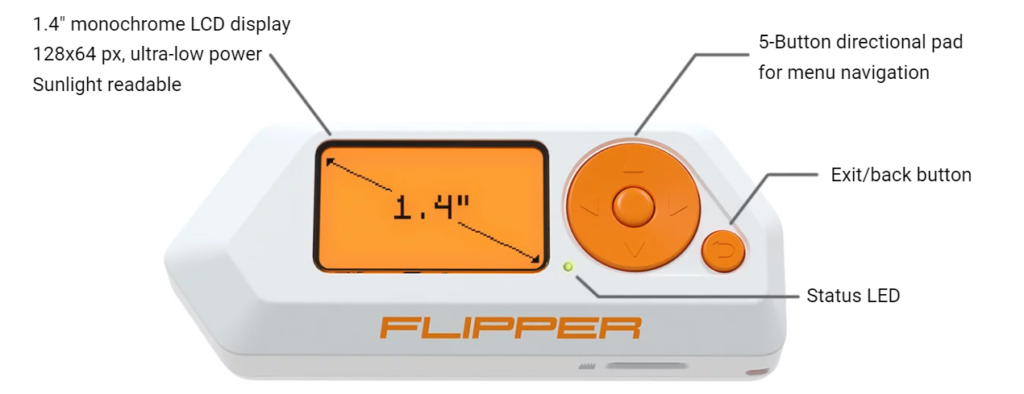

- The device can interact with old-fashioned devices like garage doors, gates, and doorbells using its sub-1GHz transceiver.
- It has a 125kHz antenna that lets you read, clone, and emulate older prox cards.
- In conjunction with the NFC module, it can read, write, and emulate both low and high-frequency NFC devices like tap cards.
- The infrared transceiver allows it to learn any IR device on the fly.
- You can run BadUSB attacks by connecting the device to a computer via USB and running a whole array of Ducky Scripts.
- You can use it to store U2F keys to do two-factor authentication.
- You can connect your phone to the Flipper via Bluetooth and control it with a handy app.
- It has a microSD card slot for storing data.
- The device does not have WiFi out of the gate, but you can add a WiFi Devboard or ESP8266 to it using its GPIO pins for various fun projects.
- The Flipper has a robust and vibrant community supporting it with tons of online resources and fun new ways to use the device.
- It can run games like DOOM, Tetris, and Flappy Bird, and even emulate Skylanders and Amiibos.
- You can use it for old-fashioned phone phreaking.
- The project is open source, allowing you to install your own firmware.
Is Flipper Zero Legal to use?
The legality of using Flipper Zero would depend on the laws and regulations of the country or region in which it is being used. Flipper Zero is a multifunctional device that can be used for a variety of purposes, including wireless communication, hacking, and security testing. Some of these activities may be illegal in certain jurisdictions if they are carried out without authorization or consent.
In general, it is important to use Flipper Zero ethically and legally, and to respect the laws and regulations of the region in which it is being used. It is recommended that you research the relevant laws and regulations related to the use of such devices in your jurisdiction and seek legal advice if necessary to ensure that you are using it in compliance with applicable laws and regulations.
Can you take Flipper Zero to Airport while Travelling?
Technically Yes!! If you are just carrying it without any unethical intentions and flashed device. Also, if the Airport authority questions the need of this device, you need to justify the reasons.
However, it would not be a crime to hold a clean device with you.
Flipper Zero Technical Specifications:
1.Sub-1 GHz Transceiver
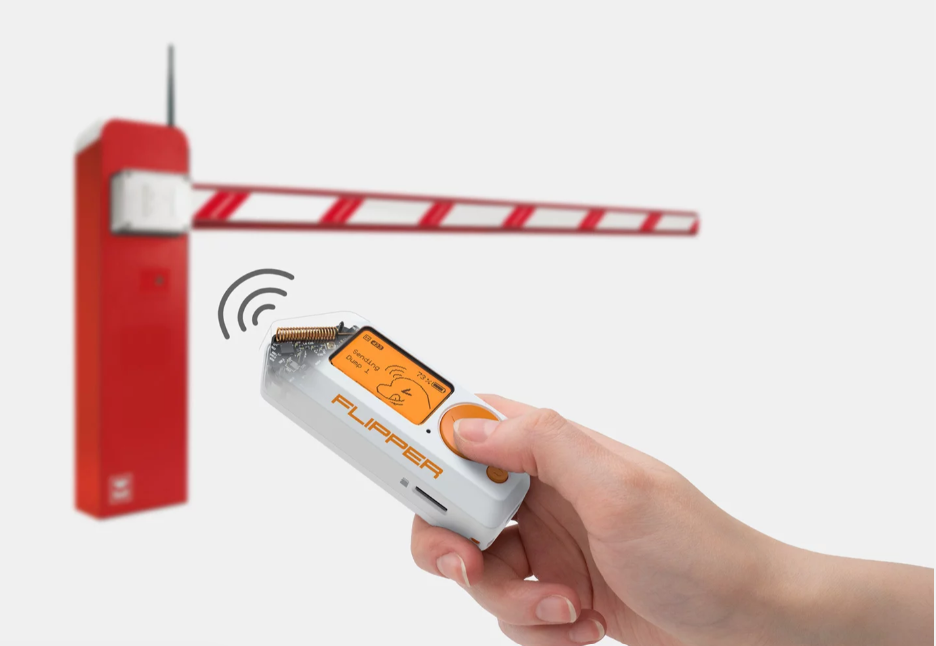
This is the functioning range for a large class of wireless devices and access control systems, including remote controls for garage doors, boom barriers, Internet of Things sensors, and remote keyless entry systems.
Flipper is a potent transceiver with a range of up to 50 metres thanks to an inbuilt 433MHz antenna and CC1101 microprocessor.
Applicable for the sensors in:
1.Smart sockets & bulbs
2.IoT sensors & doorbells
3.Garage doors & barriers
2. Customizable radio platform
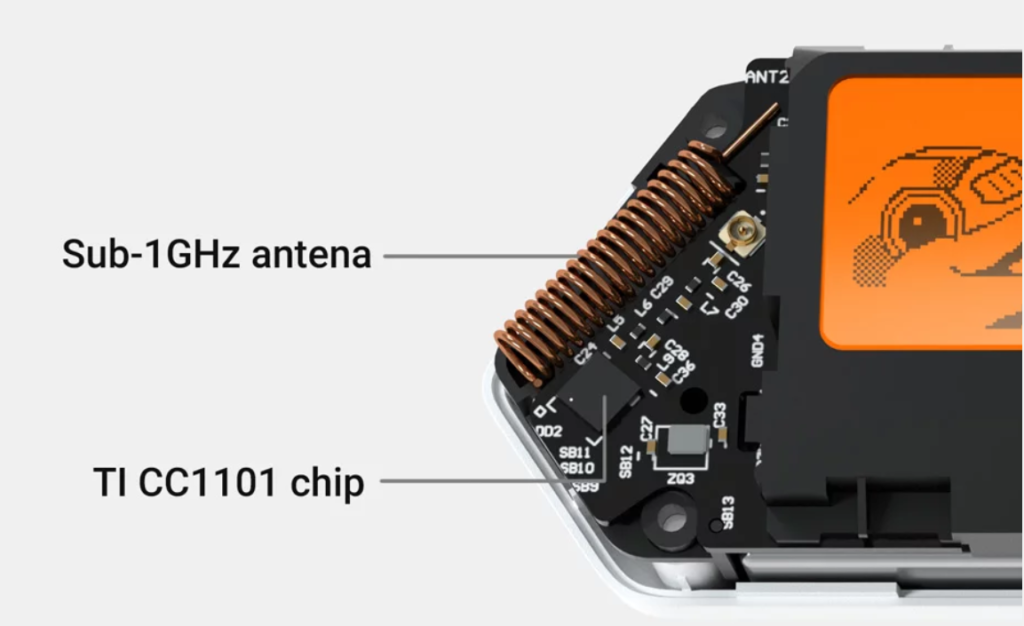
A universal transceiver for very low-power wireless applications is the CC1101. As well as OOK and variable ASK shaping, it supports a variety of digital modulations, including 2-FSK, 4-FSK, GFSK, and MSK. Your apps can link to IoT devices and access control systems, among other digital communications.
Oh, and Flipper communicates with other Flippers in the world using 433 MHz.
3. 125kHz RFID for Low-frequency proximity cards
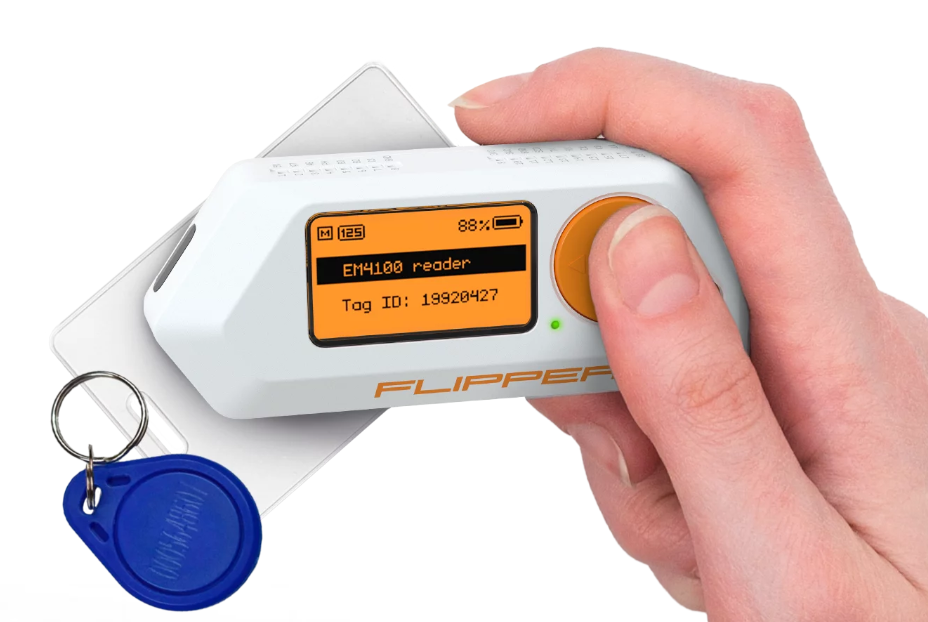
Around the world, outdated access control systems frequently employ this kind of card. It’s rather stupid; it merely has an N-byte ID and lacks any form of verification, making it accessible to everyone for reading, cloning, and emulation. Flipper has a 125 kHz antenna on the bottom that can read EM-4100 and HID Prox cards and store them in memory for later emulation.
By manually entering the cards’ IDs, you can also simulate cards. Moreover, Flipper owners can remotely swap card Identities.
4. NFC for High-frequency proximity cards
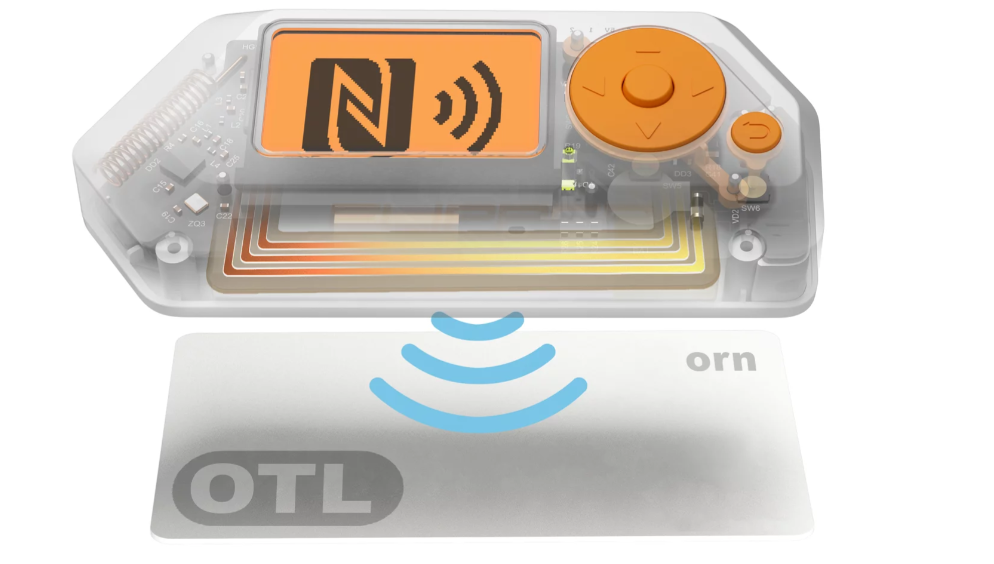
Included within Flipper Zero is an NFC module (13.56 MHz). It makes Flipper into the ultimate RFID device that can operate in both the Low Frequency (LF) and High Frequency (HF) ranges when combined with the 125kHz module. All of the main standards are supported by the NFC module.
It functions nearly identically to the 125 kHz module and enables you to read, write, and mimic HF tags on NFC-enabled devices.
5. Bluetooth

There is a Bluetooth Low Energy module included into the Flipper Zero. They offer an open source library to enable the addition of Flipper support in community-made apps, much like they do for other Flipper wireless capabilities.
You may connect your Flipper to 3rd party devices and a smartphone at the same time thanks to Flipper Zero’s full BLE compatibility, which enables it to function as both a host and a peripheral device.
With a bigger screen and more control, their mobile developers are creating official iOS and Android apps that will allow you unleash Flipper’s potential.
6. Infrared Transceiver
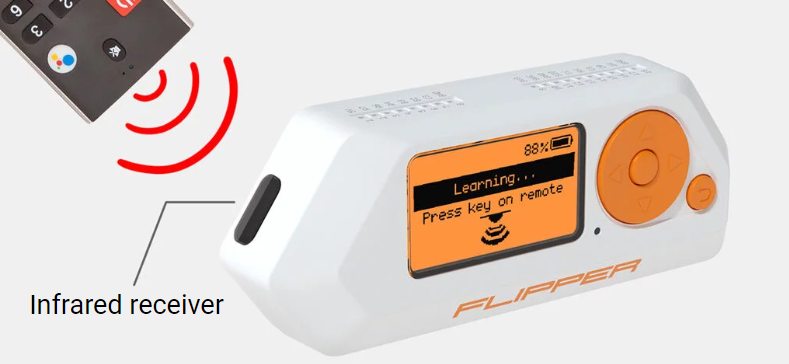
A TV, an air conditioner, a stereo system, and other equipment can all be controlled by an infrared transmitter.
Flipper comes with a built-in library of typical power and volume control command sequences from TV vendors. Users in the Flipper community often add new signals to Flipper’s IR Remote database, which updates this library.
Moreover, Flipper Zero has an IR receiver that can pick up signals, save them to the library, and then broadcast commands later. You can even upload any existing remotes you have to the public IR Remote database to share with other Flipper users.
7. MicroSD Card
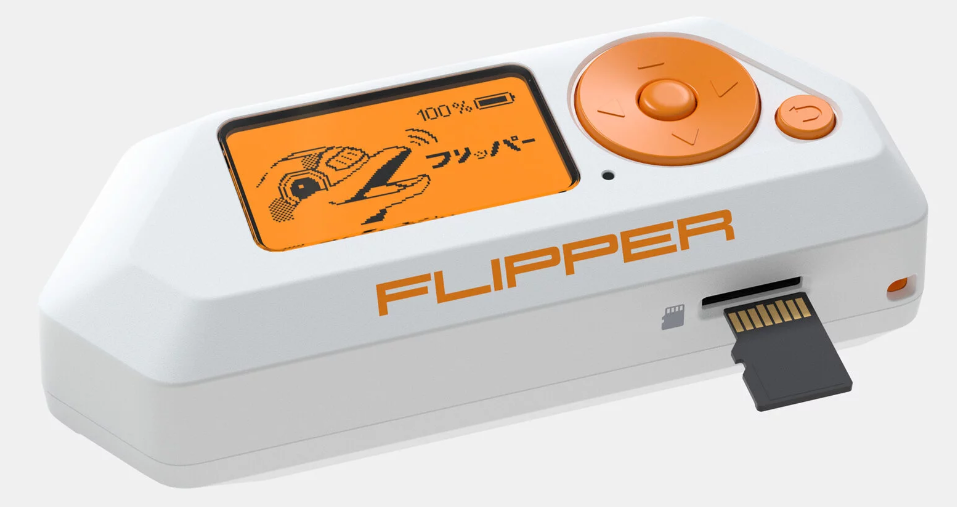
External storage for apps and data:
Flipper must store a number of large amounts of data, including remote codes, signal databases, dictionaries, image assets, logs, and more. User plugins and all of this data can be kept on an SD card.
The SD slot will include a push-push connector, ensuring that the card is securely held inside and doesn’t protrude.
To save your assets, Flipper Zero will support any microSD card with a FAT32 format, so you won’t ever have to worry about running out of memory. Flipper Zero does not require the card to function, and it is not provided.
8. Tool for Hardware Exploration
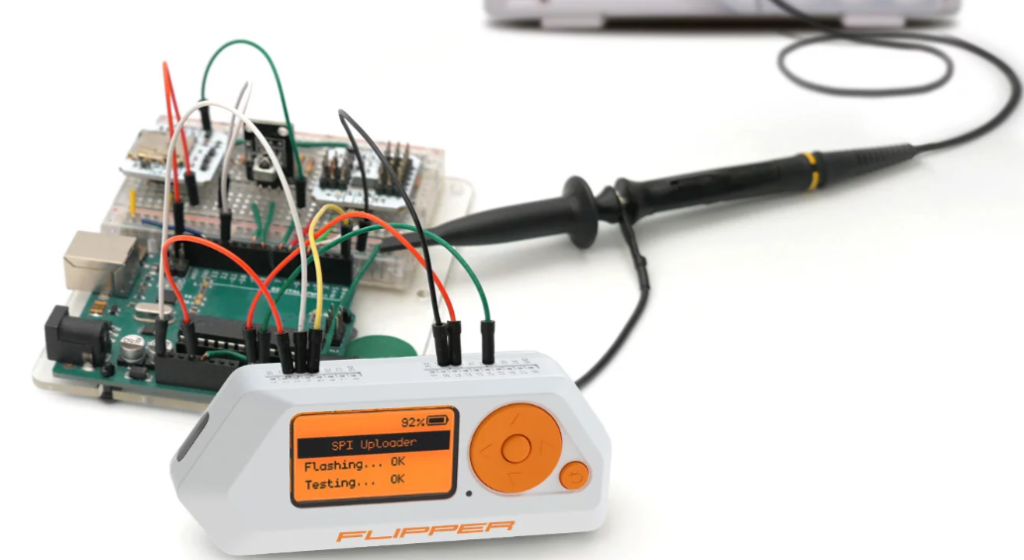
A flexible tool for hardware investigation, firmware flashing, debugging, and fuzzing is Flipper Zero. Any piece of hardware can be connected to it using GPIO, allowing you to execute custom code, control it using buttons, and print debug messages on the LCD screen. Moreover, it can function as a standard USB to UART, SPI, I2C, etc. adaptor.
9. iButton
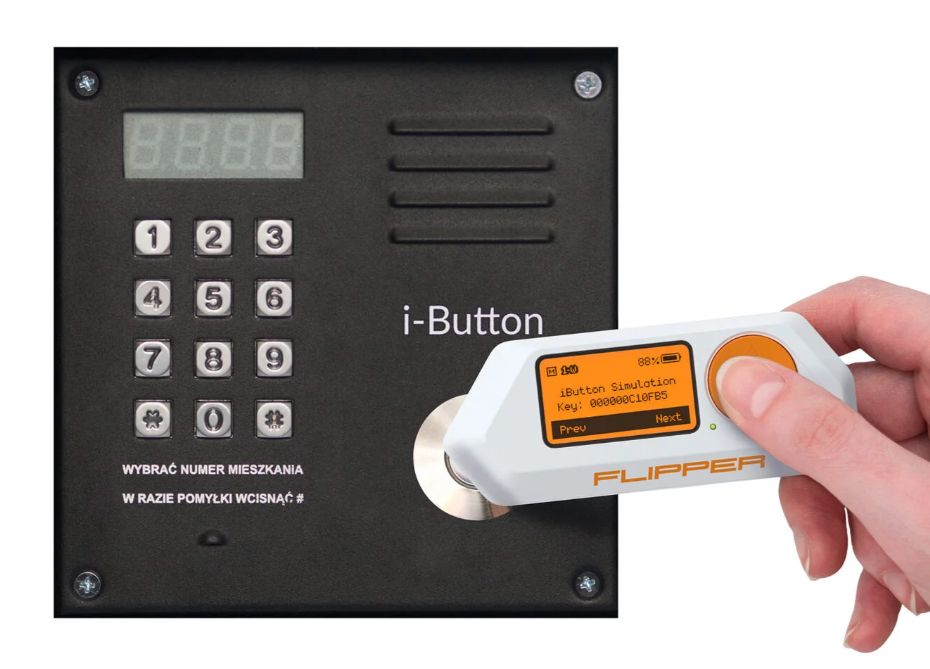
To read iButton contact keys (also known as DS1990A, Touch Memory, or Dallas key) on Flipper Zero, a 1-Wire connector is included inside the device. The world still uses a lot of this outdated technology. It makes use of the 1-Wire protocol, which lacks authentication. These keys are easily readable by Flipper, who can also replicate the key itself and save IDs in the memory and write them to blank keys.
The corner of the Flipper Zero includes a special contact pad design that serves as both a reader and a probe to connect to iButton ports simultaneously. The 1-Wire data line can be secretly intercepted with the help of this mode.
Why Flipper Zero cannot transmit restricted frequency?
Flipper Zero is designed as a versatile and powerful tool for a variety of hacking and security applications, but it has some limitations in terms of transmitting restricted frequencies. The device is not able to transmit on restricted frequencies due to legal and regulatory restrictions.
Refer this document to understand restricted frequencies of your region.
In many countries, there are strict laws and regulations governing the use of radio frequencies. These laws are in place to prevent interference with licensed radio services, such as emergency services, and to ensure that radio equipment is used safely and responsibly.
To comply with these regulations, the Flipper Zero is designed to operate within a limited range of frequencies that are commonly used for legitimate purposes, such as Wi-Fi and Bluetooth. The device is not able to transmit on restricted frequencies, such as those used by government agencies or military services, without proper authorization.
Attempting to transmit on restricted frequencies without proper authorization can result in legal consequences, including fines and even imprisonment. Therefore, it is important for users of the Flipper Zero to be aware of the legal and regulatory requirements governing the use of radio frequencies and to comply with them at all times.
Can you bypass transmitting Sub-GHz regional TX restrictions on Flipper Zero for educational purpose?
The original FW does not allow TX (transmitting) on certain frequencies for compliance and regulatory reasons.
But, you can remove that and customize it for whatever frequency you want to transmit. Check the below GitHub link to remove Sub-GHz regional TX restrictions.
https://github.com/DarkFlippers/unleashed-firmware
Please note: This custom software is for experimental purposes only and is not meant for any illegal activity/purposes. CSHQ do not condone illegal activity and strongly encourage keeping transmissions to legal/valid uses allowed by law. Also, this software is made without any support from Flipper Devices and is in no way related to the official devs.
What are the 5 best Alternatives for Flipper Zero in 2023?
1. Hak5 Pineapple
The Hak5 Pineapple is a wireless penetration testing tool that allows users to perform network analysis, packet injection, and other wireless attacks. It is a popular tool in the cybersecurity community and is known for its ease of use and portability.
2. Wi-Fi Pineapple TETRA
The Wi-Fi Pineapple TETRA is another wireless penetration testing tool that is designed for advanced users. It offers similar capabilities to the Hak5 Pineapple but is more powerful and includes additional features, such as hardware-accelerated encryption.
3. Arduino
Arduino is an open-source electronics platform that allows users to create custom hardware projects. While not specifically designed for hacking, Arduino can be used to create custom tools and gadgets for a variety of purposes, including cybersecurity.
4. Raspberry Pi
Raspberry Pi is another open-source electronics platform that is similar to Arduino but offers more advanced capabilities. It can be used to create custom hardware projects, including tools for cybersecurity and hacking.
5. USB Rubber Ducky
The USB Rubber Ducky is a small USB device that emulates a keyboard and allows users to inject keystrokes into a computer. It can be used to perform a variety of attacks, including password cracking and privilege escalation.
These are just a few examples of hacker gadgets that offer similar capabilities to the Flipper Zero. Ultimately, the choice of which device to use will depend on the user’s needs and preferences, as well as their level of experience with hacking and cybersecurity.
If you are from India and planning to buy this gadget, check out this link.

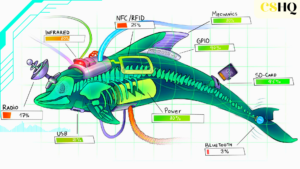



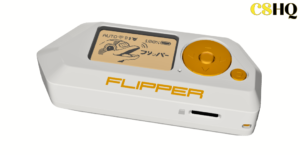
1 thought on “Flipper Zero: The Most Wanted Hacker Gadget of 2023”
Comments are closed.